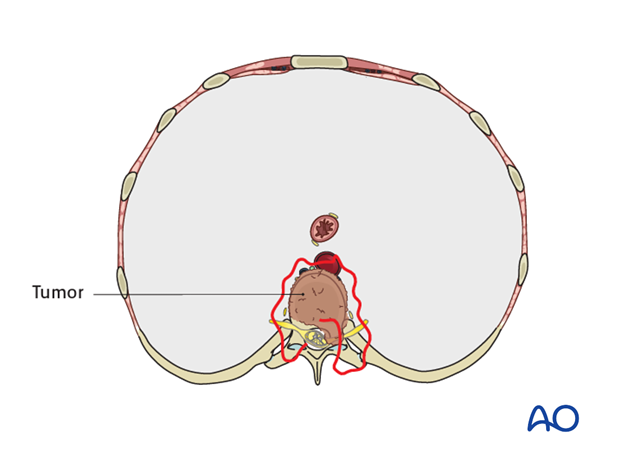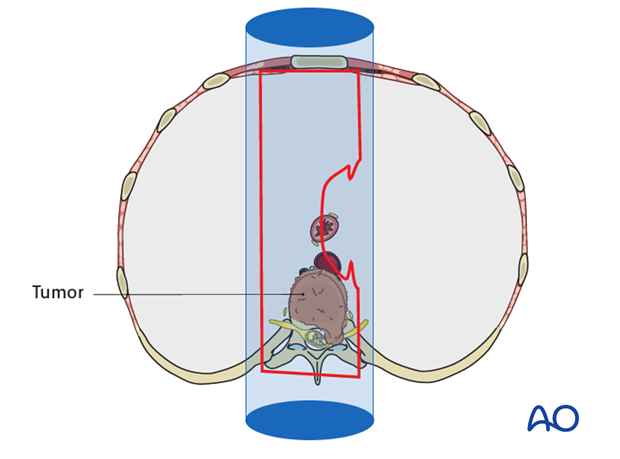Nonoperative treatment
1. Guideline
A patient with unstable spine due to tumor who cannot undergo surgical stabilization may be treated with brace/collar immobilization to palliate symptoms as long as it provides comfort. The purpose of a brace is to prevent ranges of motion that may cause pain.
Patients should still be treated with radiotherapy in order to prevent tumor progression, even if they cannot undergo indicated surgery.

2. Conventional radiotherapy
Conventional radiotherapy delivers low dose per fraction radiation to the tumor and surrounding organs. Local control after conventional radiotherapy depends on tumor histology, with many solid tumor malignancies exhibiting radio resistance to conventional fractionation.
A short course of radiation (’hypofractionated’) is recommended for patients with a limited life expectancy.

3. Stereotactic body radiotherapy
Stereotactic body radiotherapy delivers high dose per fraction radiation to the entire volume of the tumor.
Surrounding organs should be identified and can subsequently be spared from high dose radiation.
SBRT overcomes radio resistance in most tumors and delivers ablative doses of radiation.
SBRT can be associated with fracture progression, due to bone necrosis. Therefore, Pre-SBRT stabilization should be considered if the following factors are observed:
- Baseline vertebral compression fracture
- SINS score 7-12
- Planned SBRT with ≥20 Gy per fraction

4. Aftercare
Patients unfit for surgery due to medical comorbidities and/or patients refusing surgery may still benefit considerably by receiving local radiotherapy and/or systemic/medical therapy. For some of these patients the life expectancy is uncertain as tumors may respond to therapy and overall physical condition may improve to the point that indications for interventions need to be reconsidered. Therefore, it is of importance to ensure adequate clinical follow up of patients with symptomatic spinal metastases referred to non-spine specialists.













